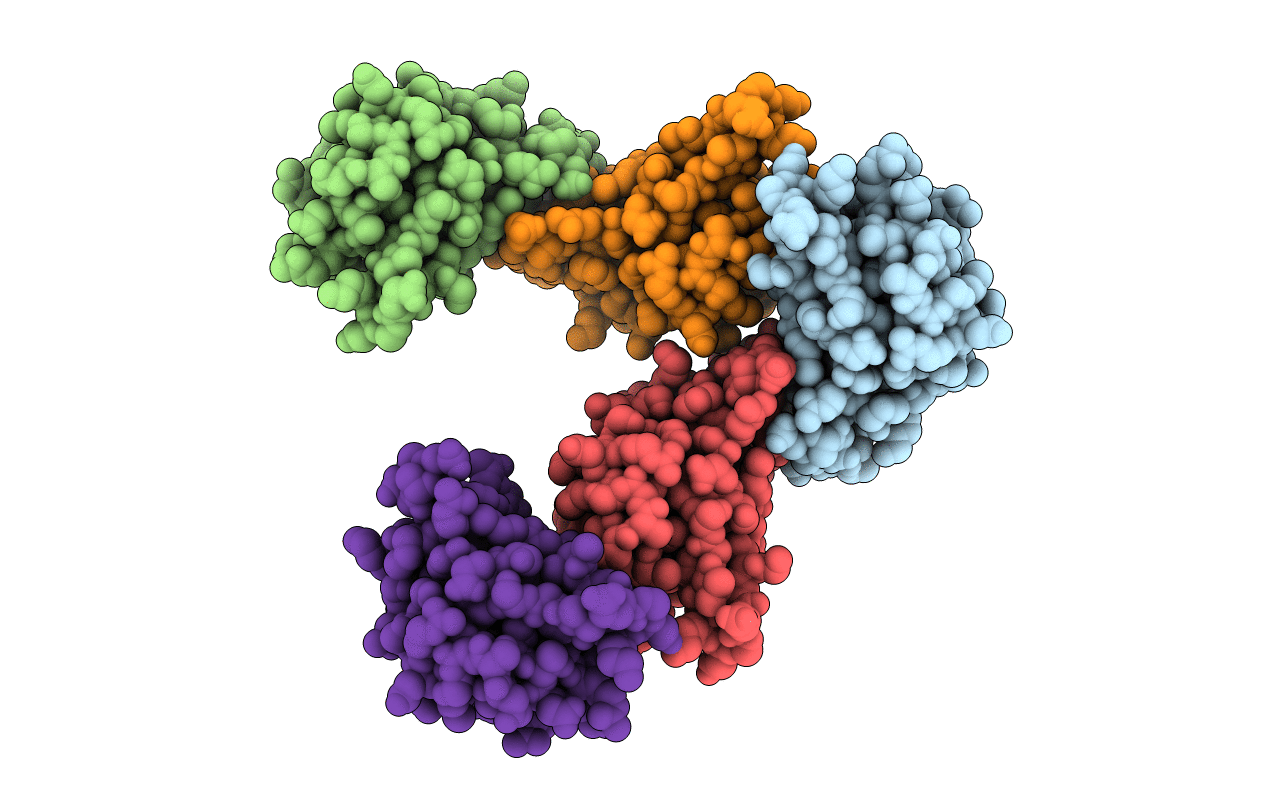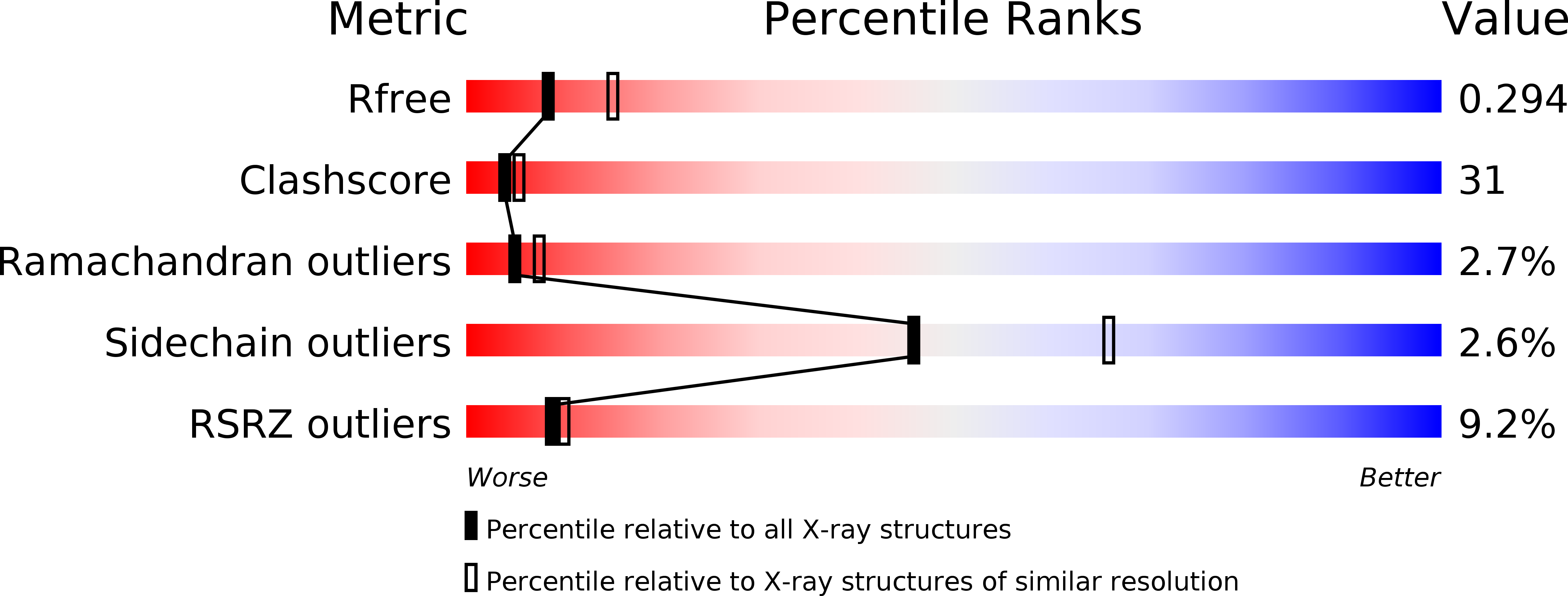
Deposition Date
2009-04-07
Release Date
2009-08-18
Last Version Date
2024-03-20
Entry Detail
PDB ID:
3GZF
Keywords:
Title:
Structure of the C-terminal domain of nsp4 from Feline Coronavirus
Biological Source:
Source Organism:
Feline coronavirus (Taxon ID: 12663)
Host Organism:
Method Details:
Experimental Method:
Resolution:
2.76 Å
R-Value Free:
0.30
R-Value Work:
0.24
R-Value Observed:
0.24
Space Group:
P 43


